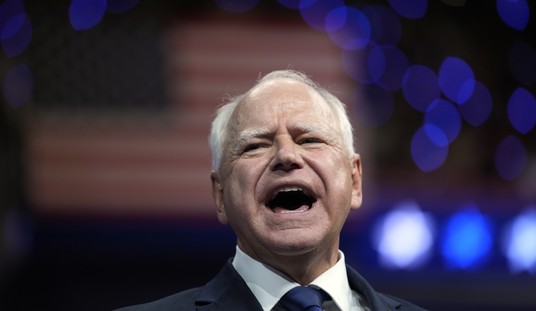In May of 2013, I had the pleasure of meeting Manhattan Senior Fellow and Forbes Opinion Editor Avik Roy at Freedomworks’ BlogCon in Dallas, Texas. He was on a panel with then-Freedomworks Vice President for Public Policy Dean Clancy to discuss health care, which was inexcusably left off the Conservative Political Action Committee’s agenda earlier that winter. He quickly brought some hard truths to the “repeal Obamacare” crowd: that goal is not longer politically feasible.
Our chance to repeal Obamacare ended when Republicans failed to win the presidency and retake the U.S. Senate. Now, millions of Americans are enrolled in Obamacare; it’s the law. Are we seriously going to have a 2016 GOP candidate who runs on taking away someone’s health care? That’s millions of votes we just lost; that’s the election. I can’t stand the thought of Obamacare. But, what should conservatives do? Well, Avik looked to other countries that have achieved universal health care coverage with free market mechanisms.
In his white paper, he uses Switzerland and Singapore as his examples:
In 2011, the Singaporean government spent $851 per capita on health care: less than a quarter of what the U.S. spent, adjusted for purchasing power parity. Singapore has achieved its savings using a universal system of consumer-driven health care. The government funds catastrophic coverage for every Singaporean, and reroutes a portion of workers’ payroll taxes into health savings accounts that can be used for routine expenses.
Switzerland offers its citizens premium support subsidies, on a sliding scale, for the purpose of buying private health insurance; there are no “public option” government insurers. Low-income individuals are fully subsidized; middle-income individuals are modestly subsidized; and upper-income individuals are unsubsidized. The sliding scale addresses a key challenge posed by welfare programs: mitigating the disincentive for welfare recipients to seek additional work, for fear of losing their benefits.
The Swiss system shares some of the unattractive features of the ACA, including the individual mandate. But because Switzerland focuses its public resources solely on lower-income individuals, the federation’s universal coverage system is far more efficient than America’s. In 2012, Switzerland public entities spent approximately $1,879 per capita on health care: 45 percent of U.S. public spending. Put another way, if U.S. government health spending was proportional to Switzerland’s, the U.S. would be able to eliminate its budget deficit.
Of course, the U.S. is neither Switzerland nor Singapore. Each country has its own political system, its own culture, and its own demography. Those differences, however, are not large enough to erase the gains that would accrue here by adapting the most relevant features of the Swiss and Singaporean health care systems to that of the United States.
Roy’s “Universal Exchange” reforms seek to insure 12.1 million Americans above Obamacare levels by 2025. Oh, and it’s projected to cut the deficit by $8 trillion over the next thirty years. So, what are the details?
The Plan would repeal many of the ACA’s cost-increasing insurance mandates, including the individual mandate. But it would preserve the ACA’s guarantee that every American can purchase coverage regardless of preexisting conditions. And it would utilize the concept of using federal premium support subsidies, on a means-tested basis, to defray the cost of private health coverage.
It would gradually migrate most Medicaid recipients, along with future retirees, onto these reformed exchanges. This change would dramatically increase the quality of health coverage offered to Americans at or below the poverty line, and preserve the guarantee of health coverage for low- and middle-income seniors, while ensuring the fiscal sustainability of both federal health care commitments. The Plan proposes minor changes to the treatment of employer-sponsored health coverage, while giving workers additional tools to lower their health care bills. It would curb the pricing power of hospitals, cap malpractice damages, and accelerate medical innovation.
Here are some additional figures from Roy’s reforms:
- Over the first ten years, the Plan will reduce federal spending by $283 billion and federal revenues by $254 billion, for a net deficit reduction of $29 billion.
- Over the first ten years, the Plan will reduce state tax revenues by $331 billion, off- set by a larger reduction in net state Medicaid spending due to the transfer of acute-care Medicaid enrollees onto the federally funded exchanges.
- Over the first 30 years, the Plan will reduce federal spending by approximately $10.5 trillion and federal revenues by approximately $2.5 trillion, for a net deficit reduc- tion of approximately $8 trillion.
- The Plan will render the Medicare Trust Fund permanently solvent, if the entirety of the proposal’s Medicare savings were ap- plied to the trust fund instead of toward deficit reduction.
Over at National Review, Callie Gable says Avik’s Medicare reform is basically Paul Ryan’s plan ton steroids. She notes that the program’s age of eligibility will increase every four months every year until it’s eliminated entirely:
Right now, seniors can’t even collect their Social Security benefits unless they sign up for Medicare — Avik would put them on the exchanges and encourage employers to offer consumer-driven coverage for them. This would effectively means-test Medicare, reducing spending on the entitlements that are driving the federal government bankrupt (Avik has specific ways to do this with the existing Medicare program too, making Medicare Part D less generous for prosperous seniors, for instance).
For Medicaid, Avik wants to put these people on private insurance plans. Gable added, “There are certain aspects of Medicaid that Roy would put entirely on the federally subsidized exchanges and parts of it (e.g., long-term care and policies for the disabled) that Roy would leave to the states. (The system is currently a mess of conflicting state and federal mandates and priorities.)”
Oh, and there’s the whole saving $5.1 trillion in the process as well.
Roy has long described Medicaid as a “humanitarian catastrophe.” On average, the uninsured are actually better off those enrolled in this miserable government program. In Virginia alone, one in four doctors aren’t accepting new Medicaid recipients. Those who are on the program don’t like the care they receive, which only makes its proposed expansion under Obamacare a massive tax increase on residents who aren’t guaranteed access to medical professionals.
As for the individual mandate, Roy wants to get rid of it. “The first is that it may be too weak to persuade healthier and younger people to overpay for insurance they don’t need,” he says. “The second is that, despite the mandate’s weakness, it represents an unprecedented—if not un- constitutional—expansion of congressional power: compelling individuals to purchase a privately delivered service.”
With the disincentive of on individual mandate gone, Roy proposes a six-month enrollment period for Americans to enroll into the Universal Exchanges every two years. Those who decide not to participate can’t “simply enter and exit the system at will and take advantage of consumer protections such as coverage for preexisting conditions, and cross-subsidies such as community rating.”
He added that this method would actually incentivize private insurance companies to draft competitive health care plans since the sooner they enroll these young Americans, the more time they’ll be able to manage their care.
Admittedly, I’m no health care policy wonk, but it’s an issue that’s imperiling America’s economic health and fiscal solvency. Perhaps, Roy has greased the skids to move this thing in a direction that will ensure we can provide good quality health care to Americans at lower costs.
At a lecture at the U.S. Navy War College three years ago, George Will aptly noted that the one of the pressing questions facing our health care system is how much of our national wealth are we willing to spend to subsidize the last twenty-five years of Americans’ lives, especially the last twelve months. Will added that 28% of all Medicare spending is devoted to end of life care. Isn’t it time to change course?
Conservatives needed ideas and it seems like we have one.
Now, it’s up to Congress. Who on the Republican side (Democrats will never go for this) will use this entirely–or as a blueprint–to help us transform Obamacare into a workable program? It’s an interesting narrative; Democrats botched Obamacare, but Republicans fixed it. I like the sounds of that, although in theory; I would like to see the whole program disintegrate without a trace. Alas, you can’t always get what you want.
Read the full report here.








Join the conversation as a VIP Member